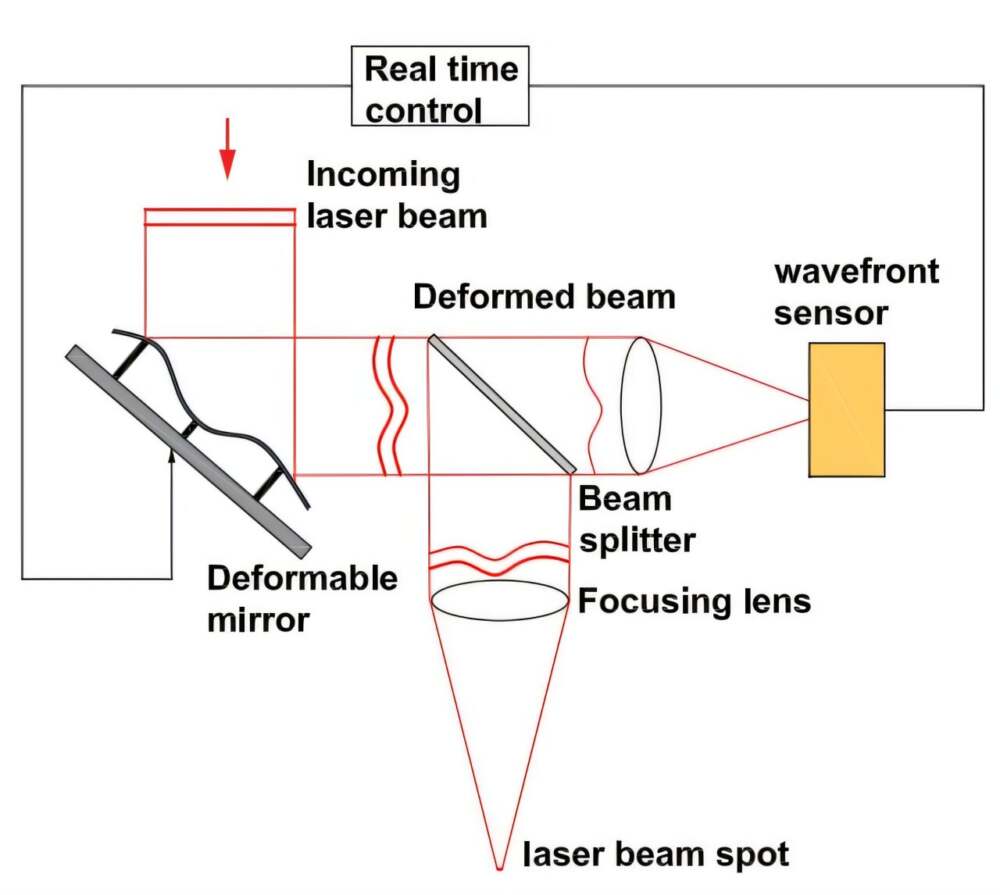The search for optical perfection has driven human innovation for centuries. From Galileo’s first telescopes to today’s space observatories, scientists and engineers have constantly sought ways to refine how we see the universe — and, by extension, how we manipulate light itself. Now, with the rapid evolution of adaptive optics technology, that pursuit is reaching extraordinary new levels. At the heart of this revolution lies a device as elegant as it is complex: the deformable mirror.
This deceptively simple piece of technology — a mirror that can bend and change shape thousands of times per second — is unlocking new possibilities in astronomy, medicine, defense, and even consumer imaging. By precisely correcting optical distortions in real time, deformable mirrors are helping humanity see the universe, and even itself, with unprecedented clarity.
The Science Behind Adaptive Optics
When light travels through any medium — air, water, or even biological tissue — it gets distorted. On Earth, our atmosphere acts like a constantly shifting lens, bending light in unpredictable ways. That’s why stars appear to twinkle and why even the most advanced ground-based telescopes can’t match the clarity of their space-based counterparts.
Adaptive optics (AO) systems were designed to overcome this fundamental limitation. By using sensors to detect distortions in incoming light and mirrors that can dynamically adjust to correct them, AO systems essentially “undo” the blurring effect in real time. The result is sharper, more stable images that can rival or even surpass those captured from space.
But to achieve this, one component is crucial — the deformable mirror.
How Deformable Mirrors Work
A deformable mirror (DM) is a flexible reflective surface controlled by dozens, hundreds, or even thousands of tiny actuators. These actuators are small mechanical or electro-mechanical devices that can push or pull the mirror’s surface by microscopic amounts. When the surface of the mirror deforms, it changes how incoming light waves reflect off it, allowing scientists to counteract the distortion measured by the system’s sensors.
Imagine the atmosphere above a telescope as a turbulent ocean. Each wavefront of light entering that ocean gets jostled, twisted, and broken apart. The deformable mirror acts as the exact opposite of the disturbance — it reshapes itself so that when light reflects off it, those distortions are perfectly canceled out.
This correction happens in real time, sometimes at speeds of thousands of adjustments per second, ensuring that even fleeting distortions don’t blur the final image.
Engineering Challenges and Breakthroughs
Creating a mirror that can flex thousands of times per second without losing its reflective precision is no easy feat. Engineers face a balancing act between flexibility, durability, and responsiveness.
1. Actuator Precision and Density
Modern deformable mirrors rely on arrays of actuators — tiny motors or electrostatic elements — that control the mirror’s surface. Each actuator can move only a few micrometers but must do so with absolute precision. Increasing the number of actuators allows for finer correction, but it also complicates control systems and power requirements.
2. Material Limitations
The mirror surface must be thin enough to deform easily yet stiff enough to maintain a perfectly smooth reflection. Materials such as polished glass, silicon, or even thin metallic membranes are used, often coated with highly reflective layers that must survive continuous flexing without cracking.
3. Real-Time Computation
Adaptive optics doesn’t just depend on physical hardware — it also relies on immense computational power. The wavefront sensors must analyze the incoming light, calculate the distortion, and command the actuators — all in a fraction of a second. Today, this is achieved through specialized processors and increasingly through AI-assisted prediction algorithms that anticipate atmospheric changes before they occur.
Applications Beyond Astronomy
While deformable mirrors are synonymous with astronomical telescopes, their impact extends far beyond the stars.
Biomedical Imaging
In medical research and surgery, adaptive optics has transformed how scientists observe biological structures. When looking deep into tissues, light scatters and loses focus. Deformable mirrors correct these aberrations, allowing for ultra-detailed imaging of cells, neurons, and even the retina — paving the way for earlier disease detection and precision diagnostics.
Laser Communication Systems
In satellite and ground-based laser communication, maintaining a clear optical path is essential. Adaptive optics ensures that laser beams remain focused and stable over long distances, even when passing through turbulent air. This has become increasingly vital for next-generation space-to-Earth communication systems and secure data transmission.
Military and Defense Applications
Defense technologies, including high-energy laser weapons and surveillance systems, rely on deformable mirrors to maintain targeting accuracy. In these systems, any atmospheric distortion could cause a loss of precision — something adaptive optics mitigates effectively.
Industrial and Consumer Uses
Even consumer technology may soon benefit from this innovation. Compact deformable mirrors are being developed for smartphone cameras, microscopes, and AR/VR devices, promising improved image sharpness and real-time correction in handheld or wearable tech.
The Latest Experiment: Deforming Mirrors for Adaptive Response
Recent experimental setups have taken deformable mirrors to new extremes. Researchers have begun deliberately mechanically stressing mirrors — bending or distorting them — to study how adaptive optics can compensate for structural changes.
By embedding sensors within the mirror’s body and using high-density actuators, engineers have developed systems that can self-correct under load. This means even if the mirror itself bends due to temperature shifts, gravity, or vibration, it can actively reshape to maintain optical perfection.
Such technology has potential implications for large telescopes, which often face structural deformation under their own weight. It could also benefit space telescopes, where thermal expansion and contraction in orbit affect mirror alignment.
The Rise of Smart, AI-Controlled Mirrors
Artificial intelligence is now beginning to transform adaptive optics. Instead of simply reacting to distortions, AI-powered systems can predict how conditions will change and adjust mirror shapes proactively.
For example, a machine learning model trained on atmospheric data can anticipate turbulence patterns and preemptively alter the mirror’s curvature. This predictive approach not only improves performance but also reduces the strain on actuators and control systems.
Moreover, AI enables faster calibration and optimization, opening the door for autonomous adaptive optics systems that can operate without constant human supervision — a major advantage for deep-space telescopes and remote research instruments.
Toward the Future of Light Manipulation
The future of deformable mirrors is intertwined with humanity’s expanding mastery of light. As manufacturing techniques improve, mirrors are becoming:
- Smaller and more affordable, enabling widespread use in labs and industries.
- More powerful, with thousands of actuators offering near-perfect correction.
- More intelligent, integrating AI and predictive algorithms for self-optimization.
Next-generation observatories, like the upcoming Extremely Large Telescope (ELT) projects, are planning to use multi-layered adaptive optics systems featuring several deformable mirrors working together — each correcting distortions at different altitudes of the atmosphere.
Beyond astronomy, the same principles could redefine quantum computing, optical data processing, and photonic networks, where light manipulation must be exact at the microscopic level.
A Mirror That Thinks
The concept of a mirror that can “think” and adapt on its own once belonged to the realm of science fiction. Today, it is becoming a practical reality — one that blurs the line between passive reflection and active perception.
From telescopes scanning the edges of the cosmos to microscopes probing the secrets of living cells, deformable mirrors are quietly reshaping our view of the universe — both vast and microscopic. As technology continues to advance, these adaptive optical systems could become as common and essential as lenses themselves, leading us into a future where light can be shaped as precisely as thought.
















Leave a Reply